Kelly Huffer
An Assessment of the Usability of Machine Learning Based Tools for the Security Operations Center
Dec 16, 2020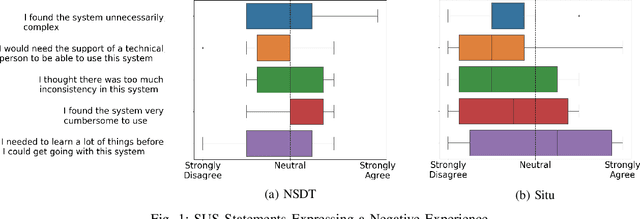

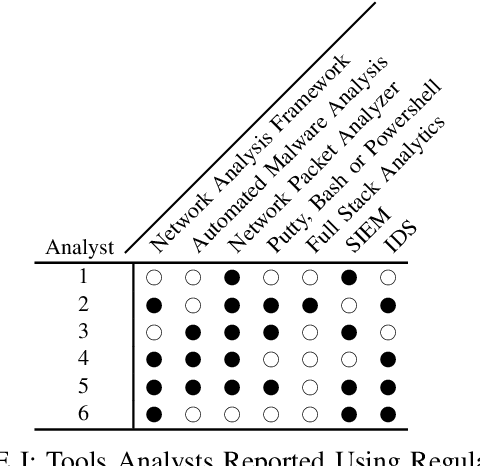

Abstract:Gartner, a large research and advisory company, anticipates that by 2024 80% of security operation centers (SOCs) will use machine learning (ML) based solutions to enhance their operations. In light of such widespread adoption, it is vital for the research community to identify and address usability concerns. This work presents the results of the first in situ usability assessment of ML-based tools. With the support of the US Navy, we leveraged the national cyber range, a large, air-gapped cyber testbed equipped with state-of-the-art network and user emulation capabilities, to study six US Naval SOC analysts' usage of two tools. Our analysis identified several serious usability issues, including multiple violations of established usability heuristics form user interface design. We also discovered that analysts lacked a clear mental model of how these tools generate scores, resulting in mistrust and/or misuse of the tools themselves. Surprisingly, we found no correlation between analysts' level of education or years of experience and their performance with either tool, suggesting that other factors such as prior background knowledge or personality play a significant role in ML-based tool usage. Our findings demonstrate that ML-based security tool vendors must put a renewed focus on working with analysts, both experienced and inexperienced, to ensure that their systems are usable and useful in real-world security operations settings.
Towards a relation extraction framework for cyber-security concepts
Apr 16, 2015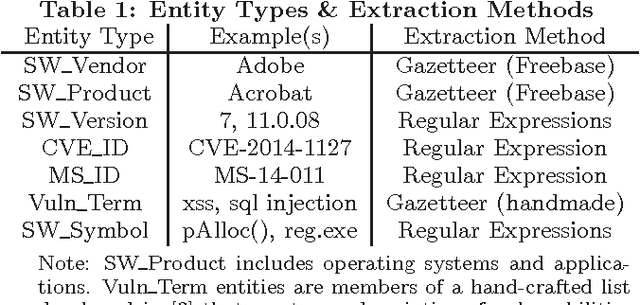
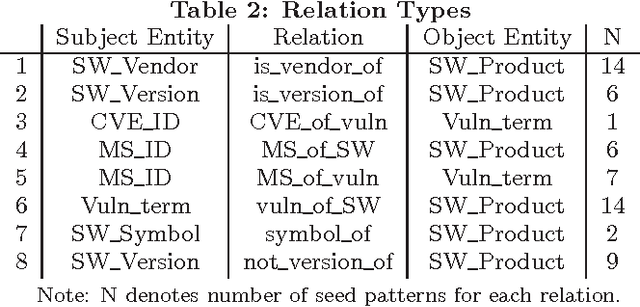
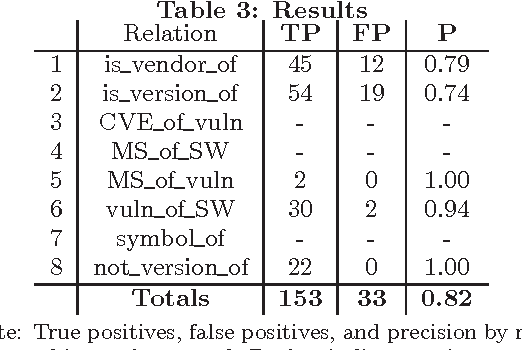
Abstract:In order to assist security analysts in obtaining information pertaining to their network, such as novel vulnerabilities, exploits, or patches, information retrieval methods tailored to the security domain are needed. As labeled text data is scarce and expensive, we follow developments in semi-supervised Natural Language Processing and implement a bootstrapping algorithm for extracting security entities and their relationships from text. The algorithm requires little input data, specifically, a few relations or patterns (heuristics for identifying relations), and incorporates an active learning component which queries the user on the most important decisions to prevent drifting from the desired relations. Preliminary testing on a small corpus shows promising results, obtaining precision of .82.
 Add to Chrome
Add to Chrome Add to Firefox
Add to Firefox Add to Edge
Add to Edge